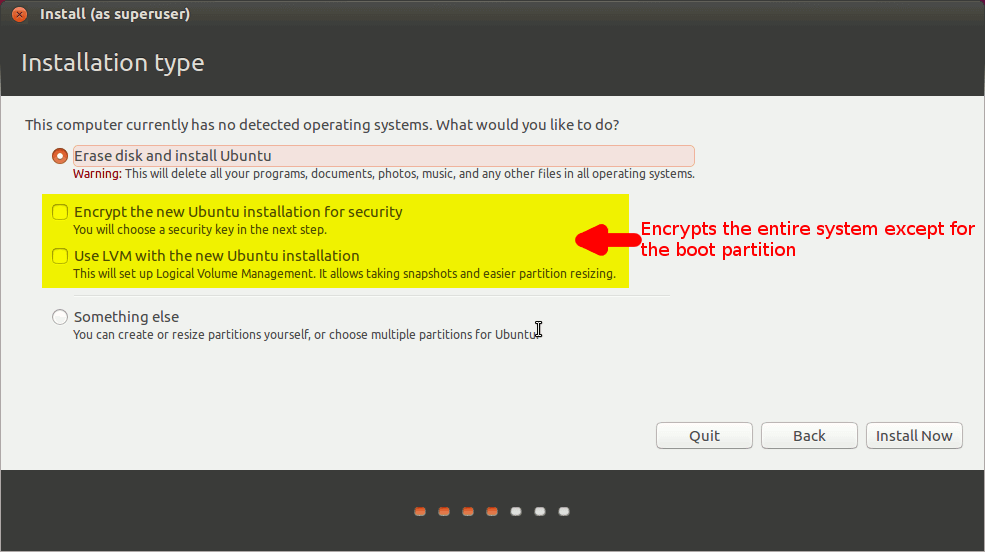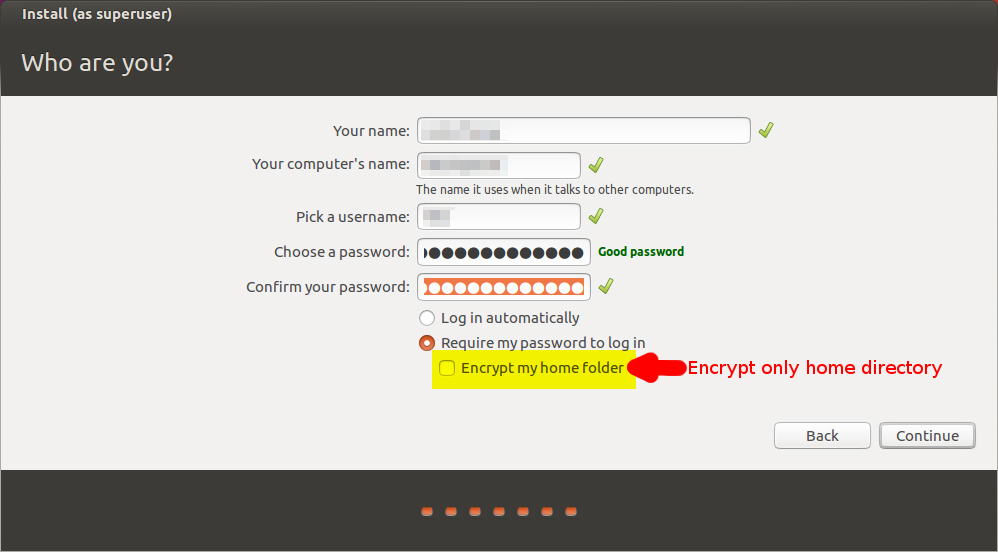I am unable to access my Ubuntu 16.04 files from my Windows 10 OS, because I had enabled encryption during installation. Is there a way I can decrypt and use my files from Windows? Else, my plan is to reinstall Ubuntu from a LiveUSB.
Before doing so, I plan to remove my Lenovo (D:) partition (since I have separate recovery media and don't plan to use Lenovo OneKey Recovery) which is about 20 Gb. I want to dedicate this space for the root partition, and reallocate the current root partition space to creating a separate home partition. Finally, I plan to increase my Linux swap space form 6 Gb to 18 Gb.
I plan to back up my files before doing all this of course (creating disk images, etc.). Could doing all this affect my files, installed packages, and 3rd party software?
Best Answer
Since there are two methods that you could have used (independently or in combination) to perform encryption, I'll touch on both separately. And then I'll address access from Windows.
You could have encrypted your entire disk with LUKS like this during install
Or you could have encrypted your home directory with ecryptfs like this during install
Disk encryption with LUKS
If you encrypted your entire disk with LUKS, you may want to look into a program for Windows called LibreCrypt. I have used it with success in the past to access LUKS encrypted partitions from Windows 7.
Home directory encryption with ecryptfs
If you encrypted your home directory, there is currently no way to get at this from Windows. However, it is possible to remove the home directory encryption so long as you have enough disk space to make a duplicate of your home directory.
Accessing the Linux ext2/ext3/ext4 filesystems from Windows
Now, in theory, all you should need to do is mount your Linux file systems in Windows. I've not tried it, but supposedly, Ext2Read should enable you to mount ext2/ext3/ext4 filesystems in Windows. Furthermore, it is said to support LVM2 which will be important if you chose to use LVM when you installed.